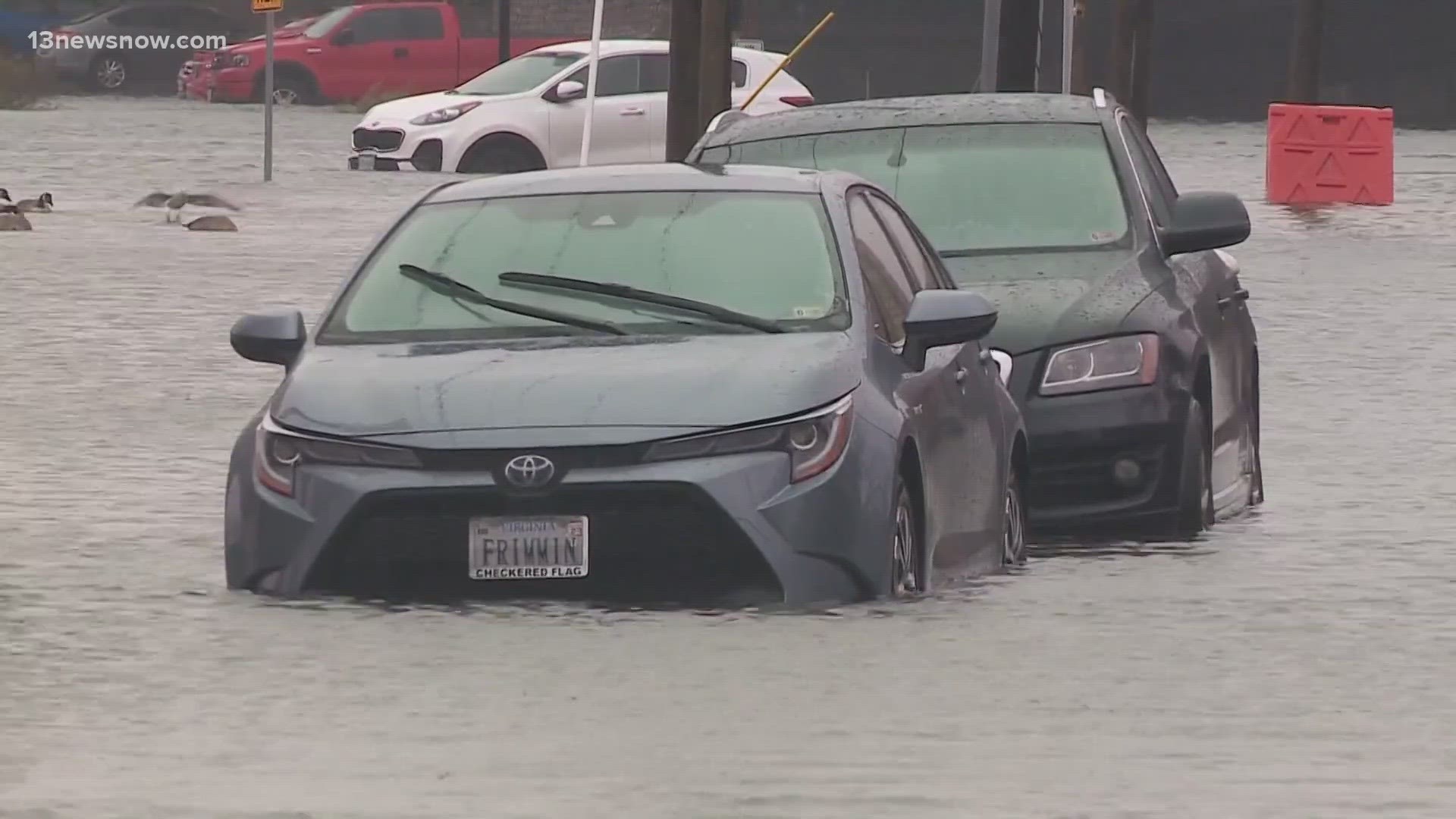NORFOLK, Va. — It may still be a hot-button issue wrapped up in politics, but the overall consensus, at least here in Hampton Roads, is that the threat of climate change is real and fast approaching.
Few cities are at higher risk than Norfolk, where sea levels are rising at a rate three times the global pace, and flooded roads are a regular problem.
It doesn't take a hurricane or a noreaster to see flooding conditions in the city. Even a regular rainstorm timed right with the tide can leave many roads underwater.
While we know the problem all too well today, climate change, and the idea of rising sea levels weren’t common knowledge back in the 1980s and 1990s.
You may have heard of the phrase "100-year flood." It’s used to describe rare, extreme rainfall events; the idea is that they happen once every 100 years.
The frequency of events like these has changed drastically.
New data from climate risk researchers at First Street Foundation gives us a more accurate look at precipitation numbers and factors in climate change in determining how often these big rainfall events happen.
The results, according to researchers, are startling.
According to their research, a rain event with 9.2 inches of precipitation within 24 hours is considered a 100-year flood event for Norfolk. But when factoring in climate change, researchers say that the amount of rainfall is really a 20-year flood event for the city.
Meaning, we’re likely to see 9.2 inches of rainfall in a day once every 20 years rather than every 100 years.
The number of hours water rose a foot or more above normal levels in 1992 was 100 hours according to ODU researchers. Fast forward to 2016, a comparable El Niño year: there were 240 hours of flood conditions, more than double what we saw just three decades earlier.

